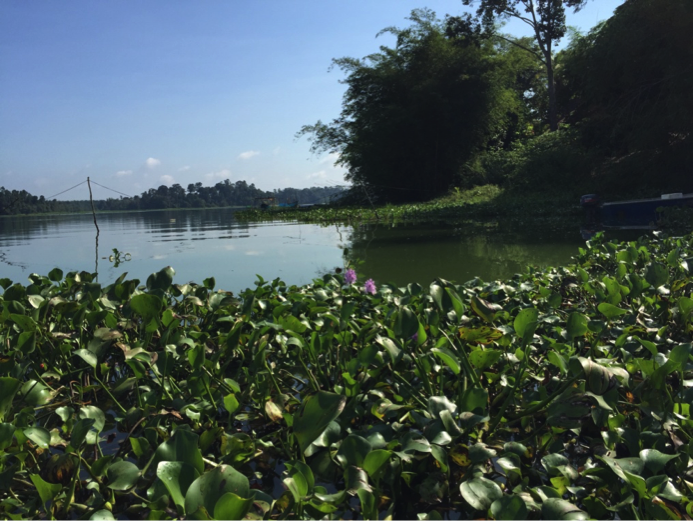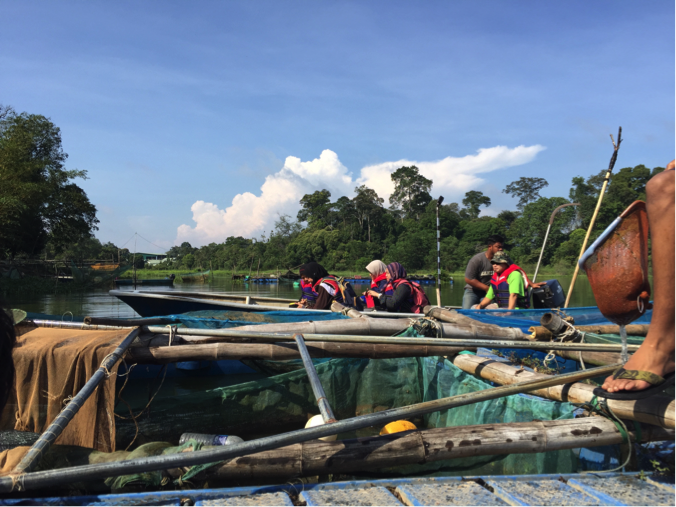This study proposes Integrated Lake Basin Management Plan (ILBMP) for two lake basins, namely Sembrong Lake in Johor and Batang Ai Lake in Sarawak. Both lakes are man-made reservoir; the first represents a shallow lake, being surrounded by plantation and agricultural areas, and the second is a deep lake, and still surrounded mainly by forest.
Sembrong Lake is located along Ayer Hitam-Kluang road. The construction of Sembrong Lake was completed in 1984; the water body is about 8.5 km2 and surrounded by the lake basin area of approximately 130 km2. It’s a shallow lake with maximum depth of 7 m and mean of 3.2 m. This man-made reservoir was originally designated for flood mitigation, but has been used for irrigation and water supply since 1997. The landuse has changed extensively with the increment of agricultural activities covering 8% (1984) to 82% (2010) of the catchment. Oil palm dominating the land use comprising about 72% of the basin area, followed by modern agriculture (15%), commercial and residential (5%), forest and swamp (4%), orchard (3%) and pasture (1%). Agricultural activities in the lake basin areas contribute significant sources of pollution, both point and non-point source especially sediment and nutrients. High loading of phosphate and nitrate may induce eutrophication. The eutrophic state of the lake is evident from the present of excessive growth of aquatic plants, especially water hyacinth (Eichhornia crassipes) and knotedweed (Polygonum pulchrum).
The Batang Ai Lake is in the Sri Aman Division of Sarawak, some 350 km from Kuching City, capital of Sarawak. This 84 km2 water body, which stretches up the Engkari and Ai valleys is the first man-made lake in Sarawak for hydroelectricity generation. This is a deep lake having a water volume of 750 million m3 with depth ranging from 14 to 63 m and a mean of 44 m. The main dam has 4 turbines of 27 MW each and with a total generating capacity of 108 MW. In addition to power generation, the government encouraged aquaculture and fisheries industry to be developed in the reservoir. As a result, cage culture with a low production of 3 tons in 1993 increased to 434 tons in 2003 and 744 tons in 2011 due to the great demand for its product throughout the year. Among the impacts of the lake is that it is an important fisheries resource for the local communities and Sarawak at large, while the water catchment areas harbour a high biodiversity whereby it is is one of the only two places in Sarawak with the Northwest Bornean Orang Utan, Pongo pygmaeus subspecies pygmaeus. Tourism, especially ecotourism, has an impact on the local economy. Challenges or threats to the lake and its water catchment areas include overfishing, increased sediment load due to logging and shifting cultivation upstream, illegal logging, removal of vegetation cover, illegal poaching and hunting, over-collection of plants with potential economic value potential.
The preparation of Integrated Lake Basin Management Plan (ILBMP) for the Sembrong Lake, and Batang Ai Lake take into consideration the natural eco-hydrological processes, current and future land use, social economic impacts, climatic changes etc. The 9-month project was funded by National Hydraulic Research Institute Malaysia (NAHRIM) and completed in December 2016.
|
The location of Sembrong Lake
|
The green colour of Sembrong Lake’s water with patches of water hyacinth |
Water quality sampling excercise at Sembrong Lake |



